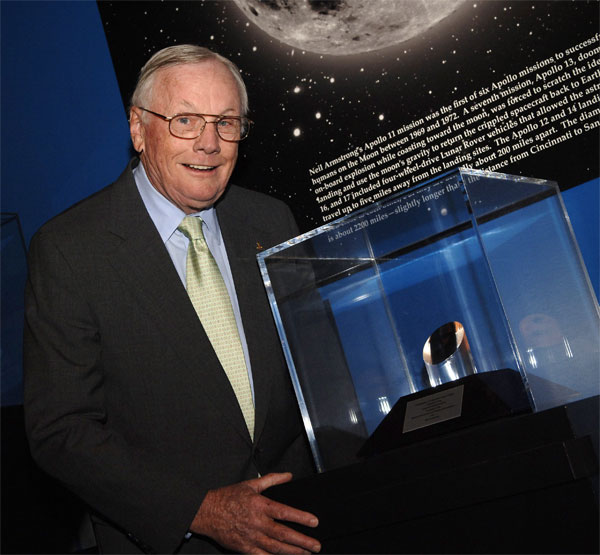Neil Armstrong Explains His Famous Apollo 11 Moonwalk

Apollo 11 astronaut Neil Armstrong may be notoriously private, but the first man on the moon recently reached out to a reporter to share some new details about his famous moonwalk with fellow astronaut Buzz Aldrin in 1969.
It all started with a blog post that was published Tuesday (Dec. 7) on the National Public Radio (NPR) website. The post examined Armstrong and Aldrin's celebrated first moonwalk on July 20, 1969, and questioned why the first exploration of the lunar surface covered such a small distance.
Robert Krulwich of NPR looked at a map from NASA that marks all the locations on the moon's surface visited by Armstrong and Aldrin. He then superimposed that map onto a regulation soccer field and baseball diamond.
In doing so, Krulwich determined that the historic moonwalk took the astronauts less than a hundred yards away from their lunar lander. Or, from the perspective of a baseball field, "Armstrong's longest, boldest walk took him about as far as Joe DiMaggio used to jog every inning - from home plate to about mid-center field."
The next day, Krulwich posted a follow-up, which featured an e-mail response from Neil Armstrong himself.
In his reply, Armstrong, who was commander of the Apollo 11 flight, explained the main reasons for traversing such a small distance, which include the extremely high temperatures on the lunar surface, uncertainties surrounding how the astronauts' spacesuits with their water-cooled interiors would hold up, and requirements from NASA that the two astronauts perform experiments in front of a fixed camera.
"We did not have any data to tell us how long the small water tank in our backpacks would suffice," Armstrong wrote. "NASA officials limited our surface working time to 2 and 3/4 hours on that first surface exploration to assure that we would not expire of hyperthermia. After returning to and repressurizing the Lunar Module, we were able to drain and measure the remaining water in the backpacks to confirm the predicted."
Get the Space.com Newsletter
Breaking space news, the latest updates on rocket launches, skywatching events and more!
Armstrong went on to say that, had there been more free time, he and Aldrin would have liked to explore more of the lunar surface.
"It is true that we would have liked to stay on the surface longer and traveled further away from the Lunar Module and the television camera," he wrote. "But we had a number of experiments to install, samples to document and collect, and photographs to take. The time available was fully allocated and we were working diligently to complete our assigned tasks."
Armstrong goes on to say that later Apollo flights were able to cover more ground thanks to the addition of lunar rovers, but that there is still a vast world left to discover.
"Americans have visited and examined 6 locations on Luna, varying in size from a suburban lot to a small township," Armstrong said. "That leaves more than 14 million square miles yet to explore."
- Apollo11 in Photos: The First Manned Moon Landing
- MostMemorable NASA Missions
- SuitSuite: Cosmic Apparel over the Years
Join our Space Forums to keep talking space on the latest missions, night sky and more! And if you have a news tip, correction or comment, let us know at: community@space.com.

Space.com is the premier source of space exploration, innovation and astronomy news, chronicling (and celebrating) humanity's ongoing expansion across the final frontier. Originally founded in 1999, Space.com is, and always has been, the passion of writers and editors who are space fans and also trained journalists. Our current news team consists of Editor-in-Chief Tariq Malik; Editor Hanneke Weitering, Senior Space Writer Mike Wall; Senior Writer Meghan Bartels; Senior Writer Chelsea Gohd, Senior Writer Tereza Pultarova and Staff Writer Alexander Cox, focusing on e-commerce. Senior Producer Steve Spaleta oversees our space videos, with Diana Whitcroft as our Social Media Editor.











